How to Grow Mugwort Plant: The Weed You Need in a Healing Garden
Medicinal herbsMugwort (Artemisia vulgaris) is a versatile perennial plant steeped in history and cultural significance. Celebrated for its aromatic leaves, this herb has been used for centuries in traditional medicine, culinary arts, and is even revered for its mystical qualities in ancient societies. In this article, we’ll cover how to grow this medicinal herb in your own healing garden.

From traditional Chinese medicine to contemporary culinary uses, mugwort remains a compelling herb.
Once considered a mystical herb that was used to stimulate vivid dreams, mugwort was also used as a flavoring in beer.
Traditional medicinal uses of mugwort include regulating menstruation, a gentle laxative, and digestive issues. Mugwort has also been used externally to treat skin irritations such as rashes and burns.
Although mugwort has been foraged for centuries, there are benefits to growing it yourself. First, there is sometimes confusion in identifying it in the wild. Second, by planting mugwort from seed, you can be sure of what variety you have.
Follow these tips to start growing mugwort from seed.

How to Grow Mugwort Plant from Seed
Mugwort is a perennial plant that can be started from seed at any time of year. Knowing when to plant and using these germination tips will make sure your mugwort seeds reach their full potential.

Tips for fail-proof mugwort seed germination
Mugwort seeds need moist, cold stratification and light to germinate.
-
Mugwort seeds will have a much better germination rate if they are first cold-stratified. Mugwort seeds need a period of moist cold to break their dormancy before they will sprout. There are several ways you can do this.
Winter sowing. With this method, you can put seeds outdoors in the late winter, where the seeds will spend enough time in a cold, wet environment that they will germinate when temperatures warm up.
Cold Moist Stratification. Indoor stratification can be done with paper towels in the refrigerator. This method lets you plant seeds at any time of year and in warmer climates.
Fall planting. By planting mugwort seeds in the fall, they will naturally go through a cold season.
Mugwort seeds need light to germinate. When planting mugwort seeds, gently press them into the soil and mist them. Keep the seeds moist until they germinate in 14 to 21 days.
Once mugwort seeds have been cold-stratified, they can be planted.
When growing mugwort indoors, water seedlings from the bottom to encourage root growth and prevent damping off.
Directly Sowing Mugwort Seeds Outdoors
Mugwort seeds can be sown directly into the garden. First, cold stratify the seeds if you are sowing in spring or summer. If you plant in fall or late winter, nature will work her magic and naturally stratify the seeds.
Plant mugwort seeds by gently pressing them into moist soil. They will need light to germinate and should sprout in 2 to 3 weeks.

Transplanting Mugwort Seedlings
Once your mugwort seedlings are several inches tall and have true leaves, it is time to get them ready to transplant.
Start by hardening off the seedlings to acclimate them to outdoor conditions. This can be done by gradually exposing the seedlings to outdoor elements such as wind, sunlight, and fluctuating temperatures over a period of 7-10 days.
Once the seedlings have been hardened off, it's time to transplant them into the garden. Space mugwort plants 2 to 3 feet apart. Mugwort plants can grow 3 to 6 feet tall.

How to Care for Mugwort Plants
The mugwort plant is known for its hardiness and versatility. It can thrive in various climates and soil types, making it an ideal plant for beginner and experienced gardeners alike. Mugwort plants require little maintenance once they are established. Mugwort can be grown in containers or directly in the ground, making it a great addition to any garden.
Sun
Common mugwort thrives in full sun. Choose a location where mugwort plants can receive direct sunlight for at least 6-8 hours per day. It can also tolerate partial shade but will grow best and produce optimal foliage in full sun.
Soil
Mugwort can tolerate all kinds of soil as long as it is well-draining to prevent root rot. Poor to moderately fertile soil
Water
Water mugwort at the base of the plant, allowing the water to penetrate the soil and reach the roots. This will encourage deep root growth and establish a strong, healthy plant. Regularly check the moisture levels of the soil to determine when the mugwort needs watering.
Pruning and Controlling Mugwort
Mugwort is considered an invasive plant in some areas. It can spread vigorously through rhizomes. You will want to be careful in your garden planning. Choose a location where your mugwort plant can grow without spreading into other areas.
The tops of mugwort plants can be cut back or pruned to encourage more bushy growth.

Harvesting Mugwort
Harvesting mugwort correctly will ensure the most potent oils. All parts of the plant can be used for herbal remedies. Harvest the leaves, stems, and flowers while the plant is flowering. Harvest roots in the fall.
The best time to harvest mugwort leaves is in the morning when the dew has dried and the plant's volatile oils are at their peak.
Drying & Preparing Mugwort
Mugwort can be dried and prepared for use in tea and food flavoring by following a few simple steps.
Once harvested, the leaves should be rinsed to remove any dirt or bugs and then laid out in a single layer to dry. When harvesting whole stems, the best method for drying mugwort is to hang the leaves upside down in a warm, dry place with good air circulation. This allows the leaves to retain their flavor and color.
It usually takes about one to two weeks for the leaves to dry completely.
Once the mugwort leaves are thoroughly dried, they can be stored in an airtight container.
Mugwort roots can be dug up in the fall. Rinse off all dirt and allow the roots to dry completely. Once they are fully dry they should snap easily. They can be stored in an airtight container away from sunlight.
Mugwort Medicinal Uses
Mugwort is a versatile and widely used herb in traditional medicine, particularly in Asian and European cultures. It is also an ingredient in insect repellant.
This powerful herb has been utilized for centuries for its various medicinal properties, including its ability to alleviate digestive issues, treat certain skin conditions, and even aid in menstrual discomfort.
Mugwort is also known for stimulating the appetite and regulating digestion, making it a popular remedy for those experiencing stomach upset. Additionally, it has been used in alternative medicine for its potential anti-inflammatory and antimicrobial properties, making it a popular ingredient in herbal teas and topical ointments.
Whether brewed into a tea, applied as a poultice, or used in aromatherapy, mugwort offers a range of potential health benefits.
Mugwort Tea
Mugwort tea is well-known for its calming and relaxing properties. It has been used in herbal medicine for centuries to promote relaxation and improve sleep quality. However, it is important to note that mugwort tea has a strong, slightly bitter taste, and you may want to sweeten it.
To make Mugwort Tea, start by boiling water and then letting it cool slightly.
Next, place 1-2 teaspoons of dried mugwort leaves in a mug or teapot.
Pour the hot water over the leaves and allow them to steep for 5-10 minutes.
The longer the leaves steep, the stronger the flavor will be.
After steeping, strain the leaves from the water and sweeten the tea with honey or sugar if desired.
Caution: It is important to note that while mugwort has been used for its medicinal properties, it is essential to consult a healthcare professional before using it as a treatment for any specific health condition.
Those who are pregnant should not take mugwort.
If you have ragweed allergies, you can have a reaction to mugwort. Also, those who are allergic to celery will most likely be allergic to mugwort as well.
Mugwort is a low-maintenance perennial herb with many medicinal benefits. From flavoring food to healing, mugwort plants can play an important part in a healing garden. With reliable heirloom seeds and these growing tips, you can start growing mugwort plants for a beneficial harvest.




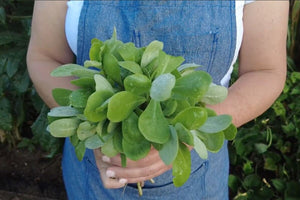
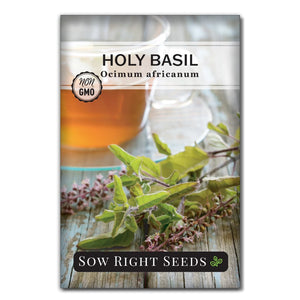
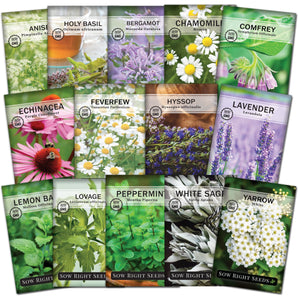
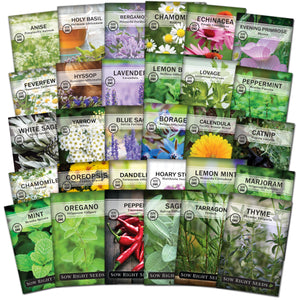
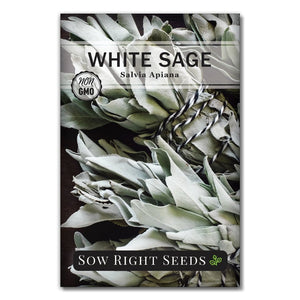
Leave a comment